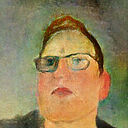Where’s the Christian moral panic about the alt-right?
Neo-Nazi edgelords have killed more than D&D and heavy metal, but there’s little alarm from the religious right
Iwas raised in a religious household—Southern Baptist to be specific—and my dad was eternally on guard against threats to my young soul. We couldn’t celebrate Halloween because it was the “Devil’s Holiday.” My brother and I had to settle for church-held “fall carnivals” featuring religious-themed haunted houses that were like live-action Chick tracts.
Anything vaguely “Satanic,” no matter how benign, was verboten. Dad wouldn’t let me take karate. They practiced meditation and that was “pagan.” He promised to find a good Christian martial arts instructor who didn’t do that sort of thing. He never did. He did however take us to see the Power Team, who would break stuff using the power of Christ (and sometimes their heads).
We weren’t allowed to watch the movie Willow. It had magic in it. Dad confiscated our Dungeons & Dragons video games because, apparently, some kid who was really into D&D had murdered his dad (I suspect the motive for that particular ban was self-preservation rather than any concern for my spiritual well-being).
The murder of Leith von Stein by his stepson Chris Pritchard happened in 1988 but the moral panic it inspired was sustained well into the 90s due to the book Blood Games and the subsequent film adaptation. While the link between D&D and von Stein’s killing was tenuous, it was enough to give dad a pretext to snatch my copy of Eye of the Beholder.
Fast forward to last week, when another teenage kid with unusual interests murdered his mother. Outside of a very narrow circle of people on the left, no one really drew a connection between the violence and how he spent his free time. Gregory Ramos, a 15-year-old from Florida, who was charged last Thursday with strangling his mother to death, described himself on Facebook as a “raging conservative with a passion for debate” and his profile featured a “Kekistani” flag, a nod to the alt-right /pol/ board on 4chan.
Given that Ramos killed his mother during an dust-up over his bad grades, it could be argued that his personal politics are as irrelevant as Pritchard’s love of fantasy roleplaying games. But on the other hand, violent ideation is as crucial to /pol/ culture as 12-sided dice are to D&D.
Further, Ramos’ is only the most recent case of parricide from the alt-right. Lane Davis, known online as Seattle4Truth, murdered his father in summer of last year. Davis is a Pizzagate truther who once interned for Milo and frequented the pro-Trump alt-right subreddit r/The_Donald. Unlike the killing of Ramos’ mother, this homicide had an unambiguously political dimension to it. According to the 911 call placed by his mother moments before Davis stabbed his father to death, he had been chasing his parents around the house screaming that they were “leftist pedophiles.”
For decades, unsubstantiated reports of Satanic cults engaged in ritualistic murder and child abuse held hostage the imaginations of religious conservatives like my father. Now, despite clear evidence of a tangible force driving young people to violence (more than 100 killed or injured since 2014, according to the SPLC), there’s a conspicuous lack of alarm.
Last year, when black delegates to the Southern Baptist Convention submitted a resolution condemning the alt-right and white supremacy, it was initially rejected without consideration due to “wording.” After heavy backlash and much attention from the press, the convention ultimately passed a second draft with only one voting against.
The fact that there was any sort of controversy is telling. Why is a group that lost its collective mind over the dubious dangers of violent video games and loud music showing such ambivalence in the face of a threat that is palpable and causing quantifiable harm?
For an answer, it’s necessary to look at the anatomy of moral panic. The UK-based social scientists who coined the phrase in the 1970s viewed the social phenomenon primarily as a process of “Othering,” i.e. the demonization of a marginalized out-group by the dominant group. In his seminal 1972 study on the sensationalism surrounding clashes between mods and rockers, criminologist Stanley Cohen wrote that moral panic entails the creation of “folk devils.”
Given this framework, one can see why no moral panic arose in the case of Lane Davis as it did in the murder of Leith von Stein. How could conservatives blame Davis’ actions on his beliefs when they share so many? Pizzagate, with its fear-mongering about “spirit cooking” and ritualistic child abuse, was a perfect facsimile of earlier forms of Satanic panic.
Since moral panic is fundamentally about creating an “us” and a “them,” it’s clear why people like Davis can never be the subjects of conservative moral panic. From the perspective of the right, “they” are “us.”
